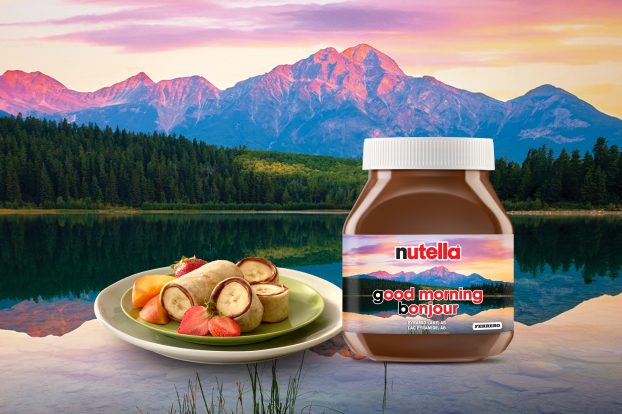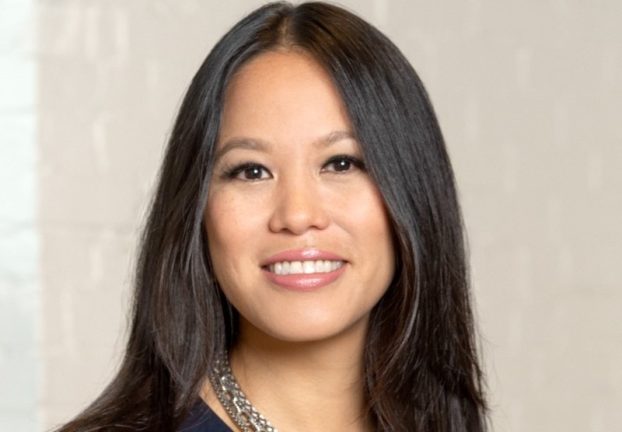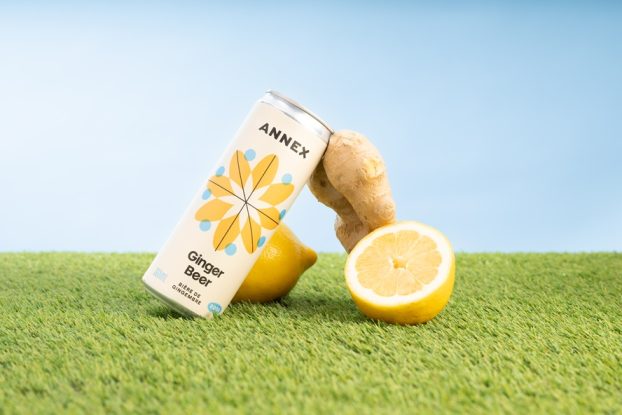This story was originally published in the fall 2022 issue of strategy.
By Will Novosedlik
Duke Ellington. The name conjures up adjectives like urbane, sophisticated and elegant. Listening to his music is like curling up with a good book. It soothes the soul.
Heather Reisman, founder and executive chair of Indigo, wanted to create those same feelings some 25 years ago when she first started turning over the concept for a new kind of bookstore in her mind. “From the beginning, what we wanted to do for customers was inspire, inform and indulge,” she explains. “And it was those three words, while I was listening to Duke Ellington’s Mood Indigo, that inspired the name.”
For as long as she can remember, Reisman has loved books. “Bookstores are my happy place,” she explains. “I would buy everything – including my groceries – in a bookstore if I could.”
But that wasn’t really done at the time. In 1996, when the ideas were first percolating, a seasoned retailer might not have put books and groceries in the same sentence, let alone the same store. But Reisman was not a retailer when she opened the first store in 1997. Instead, she looked around the retail landscape and saw an opportunity for something new.
“I’m not sure a business school analysis would have confirmed there was an opportunity for me, particularly as I had never been in retail,” she reflects. “But I was a customer and, as good as the existing players were, I had my own vision of what I would want in a great bookstore. That vision propelled me to take the risk.”
Reisman knew the market was ready for a more curated experience – one that had all the intimacy, love and service of a small independent, coupled with the dynamism and opportunity offered by operating at scale. It would have space for other cultural products – music, movies, beautiful writing papers. It would be a candy store for the mind.
What she ultimately landed on was the idea of “a cultural department store” – and there was nothing quite like it in the marketplace at the time.
A different kind of department store
One person who wholeheartedly agreed with the vision was designer Bruce Mau, who became involved in the Indigo launch and brought in architects Kuwabara, Payne, McKenna and Blumberg to help shape the vision.
One of the signature features of the retail space was its declaration of pride in Canadian culture. “The world needs more Canada” featured prominently on a massive mural in the flagship store, along with the names of Canada’s most celebrated artists, writers, musicians, actors and filmmakers. Says Mau, “It was one of my favourite things. It’s such an audacious, un-Canadian thing to do, which is why the tagline is so brilliant.”
Mau describes the original concept as a cultural meeting place. As he tells it, when the first store opened in Burlington, Ontario, “Moms wandered through the store in tears. They had never seen such a place.’” It became a kind of cultural oasis.
Indigo president Andrea Limbardi, now a 20-year veteran of the brand, concurs. “Our customers call Indigo their ‘happy place,’ a place that’s all pleasure and no guilt. I’m driven to create an environment where our customers can get away from the stresses of their everyday lives whenever, however and every time that they interact with us. We’re striving to be a reprieve from all of that noise.”

Indigo gets some of its best ideas from a 10,000-strong customer panel dubbed the “Indigo Innovators.” The intel has helped in the development of proprietary products like OUI, Nóta, The Littlest, Mini Maison and IndigoScents, as well as Love and Lore.
Evolving from books to life
Visit a store today and it’s pretty clear that it’s about more than books. When asked what made her decide to expand into other categories, Reisman says, “We built a wonderful connection with our customers in the book business. Then, organically, certain products became less relevant and others were opportunities. Our starting point was always books, big ideas, culture – and culture is about food, travel, creativity, as well as the big, important threads which occupy our thoughts.”
Adds CEO Peter Ruis, “There was this idea of taking all of the purpose and the intentionality that you get from books and bring in products around them that are curated and interesting and have been bought without an algorithm, with real people in mind.”
Ruis has now been with Indigo for two years. He comes to the brand with extensive experience in retail categories such as fashion, home, beauty, food and beverage. He explains Indigo’s growth into other categories as the natural evolution of a brand whose average in-store dwell time is well above most other stores (where it tends to hover around the 45-minute mark). It just makes sense to pair a collection of cookbooks with a collection of cookware, he suggests.
To help spur those ideas, Indigo relies on the combined power of an internal design team and a 10,000-strong customer panel to evaluate and come up with product ideas. The customer panel, dubbed the “Indigo Innovators,” is consulted regularly, while the design team develops proprietary products like OUI, Nóta, The Littlest, Mini Maison, IndigoScents as well as Love and Lore to help power those pairings.
Modern homeware brand OUI, for example, launched in 2020 with categories like sleep and bedding, storage and organization, sustainable living and functional kitchen. Nóta, meanwhile, launched in 2021 and is a collection of stationery, gift wrap and home office products made with sustainability as a key pillar. The assortment is rounded out by responsibly designed products ranging across stationary, journals, calendars and gift wrap.
Together, these two internal brands generated over 25% of total revenue growth last year, which amounts to roughly $40 million. The brand hopes to repeat that success in categories such as gifting, tech, plants, gourmet, arts and crafts, vinyl records, Manga, wellness, kids and baby. All in good time.

In 2010, Indigo expanded its IndigoKids departments in 30 locations, furthering its goals to position Indigo as the ultimate family-friendly destination and the largest specialty toy retailer in Canada.
Curating a purposeful life
“I think a lot of brands tend to do one of two things,” says Ruis. “They stick with what worked in the past and just go on and on with the same platform forever, maybe with minor tweaks. Or they tear it all up and re-launch. Twenty years ago, you could have looked at the book business and pretended Amazon wasn’t happening, or eBooks weren’t a thing or that people were going to stick with DVDs rather than start streaming. Or, you could have expanded into new categories. Good brands adapt to the times.”
That’s true in retail more than most categories, and it has been true of Indigo more than most retail brands. After merging with Chapters in 2001 – itself the result of a pairing of two of Canada’s major bookstores, Coles and Smithbooks – Indigo Books & Music could boast 50% market share and had effectively become the largest bookseller in the country. The company has spent the ensuing 21 years evolving from a bookstore into a book-based lifestyle brand.
Whether that means hosting a Harry Styles record launch or bringing in a line of handcrafted Portuguese bed linens, Indigo has taken its brand to a more experiential level. “Our brand is based on the idea that you can bring your personal purpose to life via books and related merchandise,” says Ruis. “Whatever your purpose or passion, you can bring that journey to life via the store.”
To that end, in September, Indigo unveiled its new brand platform: “Life on Purpose.” Says Ruis, “The message to our teams is: everything we do, every product we make or curate, has to have a purpose, a reason to be there. That includes whether it’s ethically and sustainably made. We’re not taking merchandising decisions lightly. We don’t just want to become a marketplace for the sake of selling more stuff.”
“It’s the idea of taking what customers call their ‘happy place’ and amplifying that experience in every way, from product development and curation to a new website, new store designs and an expanded assortment,” Limbardi adds.
Rebooting a digital pioneer
It also means being ready for whatever sudden changes the market throws at you. Indigo was an early adopter of e-commerce, launching one of the first online book stores in Canada – indigo.ca – in 1999. Over the years, the digital ecosystem has grown organically, but sometimes you get a chance at a total reboot.
Indigo got that opportunity because of COVID-19. In early 2020, Limbardi and her team had set out to create a future state digital technology roadmap to fully modernize their 20-year-old technology stack. When the pandemic hit, they were already committed to bringing together a best-in-class martech and digital technology suite. With stores closed, the abrupt, pandemic-induced pivot to digital across the entire organization in the fourth quarter of fiscal 2020 included optimizing the website experience, customer service automation, an express pick-up offering and curb side pick-up, among other things. Additionally, third-party, same-day fulfillment solutions, including Instacart in 2020 and Cornershop by Uber in 2021, enabled customers to have their orders delivered in as little as an hour in markets across Canada.

While Indigo’s focus remains on books, its expansion has included multiple ventures into different lifestyle categories.
Planning for the next 25 years
If the brand is a canvas for the purposeful pursuit of one’s passions, it’s also equally one for informed retail experimentation.
One example is Indigo’s concept store in Short Hills, New Jersey, about an hour’s drive west of Manhattan. “That’s been a really fascinating story for us,” says Ruis. “We took our concept and shifted it a little bit, tilting it more towards general merchandise. We adjusted the ratio of books to merchandise from 55% books and 45% general merchandise – which is our typical mix in Canada – to 40% books and 60% general merchandise.
“We found a niche. We became the preferred destination for New Yorkers for coffee table books. In fact, every decorator in New York comes to that store to buy these big format coffee table books for their clients’ homes. So we go from books about décor to books as décor. Who knew? That store has had an incredible year.”
Are there plans to expand further into other markets? Maybe, but there’s no rush.
“It’s not something that’s going to happen in the next two years because we have so much opportunity here in Canada,” answers Ruis. “We think we can double the business here. But it shows that this ‘life on purpose’ brand is not one dimensional. It’s not the old Chapters business where you walk in and just have loads of books. It has far more elasticity, more growth potential.”
Sums Heather Reisman, who says her proudest accomplishments have been building a strong team and achieving a high level of affection for the brand: “We’re far from done. There’s much more of the story to come.”
























